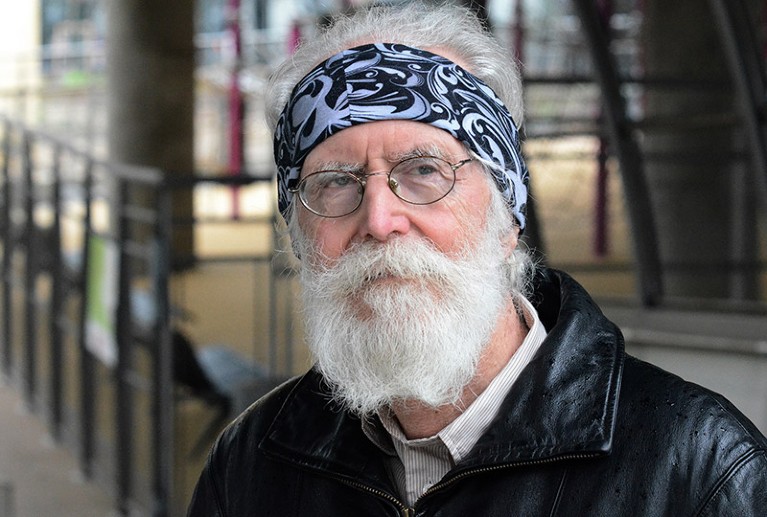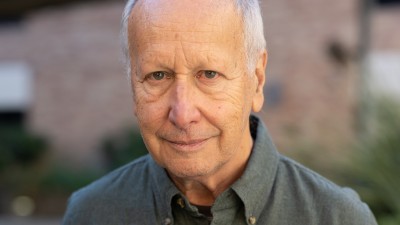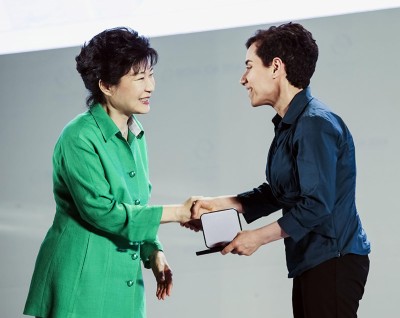[ad_1]

Michel Talagrand studies stochastic processes, mathematical models of phenomena that are governed by randomness.Credit: Peter Bagde/Typos1/Abel Prize 2024
A mathematician who developed formulas to make random processes more predictable, and helped to solve an iconic model of complex phenomena, has won the 2024 Abel Prize, one of the field’s most coveted awards. Michel Talagrand received the prize for his “contributions to probability theory and functional analysis, with outstanding applications in mathematical physics and statistics”, the Norwegian Academy of Science and Letters in Oslo announced on 20 March.
Assaf Naor, a mathematician at Princeton University in New Jersey, says it is difficult to overestimate the impact of Talagrand’s work. “There are papers posted maybe on a daily basis where the punchline is ‘now we use Talagrand’s inequalities’,” he says.
Talagrand’s reaction on hearing the news was incredulity. “There was a total blank in my mind for at least four seconds,” he says. “If I had been told an alien ship had landed in front of the White House, I would not have been more surprised.”
The Abel Prize was modelled after the Nobel Prizes — which do not include mathematics — and was awarded for the first time in 2003. The recipient wins a sum of 7.5 million Norwegian kroner (US$700,000).
‘Like a piece of art’
Talagrand specializes in the theory of probability and stochastic processes, which are mathematical models of phenomena governed by randomness. A typical example is a river’s water level, which is highly variable and is affected by many independent factors, including rain, wind and temperature, Talagrand says. His proudest achievement was a set of formulas that poses limits to the swings in such a stochastic process. His formulas express how the contributions of many factors often cancel each other out — making the overall result less variable, not more.
“It’s like a piece of art,” says Abel-committee chair Helge Holden, a mathematician at the Norwegian University of Science and Technology in Trondheim. “The magic here is to find a good estimate, not just a rough estimate.”
Abel Prize: pioneer of ‘smooth’ physics wins top maths award
Thanks to Talagrand’s techniques, “many things that seem complicated and random turn out to be not so random”, says Naor. His estimates are extremely powerful, for example for studying problems such as optimizing the route of a delivery truck. Finding a perfect solution would require an exorbitant amount of computation, so computer scientists can instead calculate the lengths of a limited number of random candidate routes and then take the average — and Talegrand’s inequalities ensure that the result is close to optimal.
Talagrand also completed the solution to a problem posed by theoretical physicist Giorgio Parisi — work that ultimately helped Parisi to earn a Nobel Prize in Physics in 2001. In 1979, Parisi, now at the University of Rome, proposed a complete solution for the structure of a spin glass — a simple, abstracted model of a material in which the magnetization of each atom tends to flip up or down depending on those of its neighbours.
Parisi’s arguments were rooted in his powerful intuition in physics, and followed steps that “mathematicians would consider as sorcery”, Talagrand says, such as taking n copies of a system — with n being a negative number. Many researchers doubted that Parisi’s proof could be made mathematically rigorous. But in the early 2000s, the problem was completely solved in two separate works, one by Talagrand2 and an earlier one by Francesco Guerra3, a mathematical physicist also at the University of Rome.
Finding motivation
Talagrand’s journey to becoming a top researcher was unconventional. Born in Béziers, France, in 1952, at age five he lost vision in his right eye because of a genetic predisposition to detachment of the retina. Although while growing up in Lyon he was a voracious reader of popular science magazines, he struggled at school, particularly with the complex rules of French spelling. “I never really made peace with orthography,” he told an interviewer in 2019.
His turning point came at age 15, when he received emergency treatment for another retinal detachment, this time in his left eye. He had to miss almost an entire year of school. The terrifying experience of nearly losing his sight — and his father’s efforts to keep his mind busy while his eyes were bandaged — gave Talagrand a renewed focus. He became a highly motivated student after his recovery, and began to excel in national maths competitions.
Just 5 women have won a top maths prize in the past 90 years
Still, Talagrand did not follow the typical path of gifted French students, which includes two years of preparatory school, followed by a national selection for highly selective grandes écoles such as the École Normale Supérieure in Paris. Instead, he studied at the University of Lyon, France, and then went on to work as a full-time researcher at the national research agency CNRS, first in Lyon and later in Paris, where he spent more than a decade in an entry-level job. Apart from a brief stint in Canada, followed by a trip to the United States where he met his wife, he worked at CNRS until his retirement.
Talagrand loves to challenge other mathematicians to solve problems that he has come up with — offering cash to those who do — and he keeps a list of those problems on his website. Some have been solved, leading to publications in major maths journals. The prizes come with some conditions: “I will award the prizes below as long as I am not too senile to understand the proofs I receive. If I can’t understand them, I will not pay.”
[ad_2]
Source Article Link



